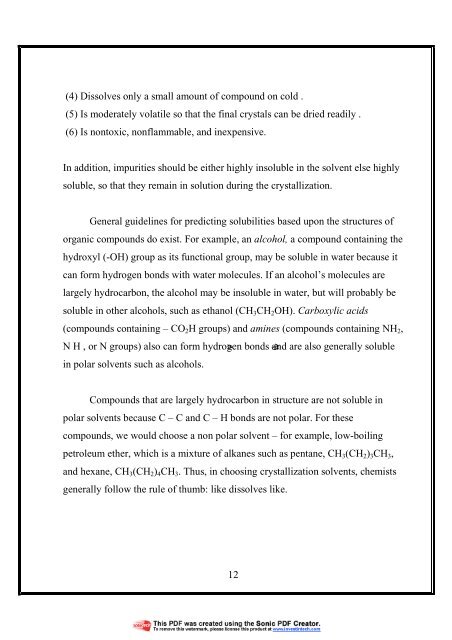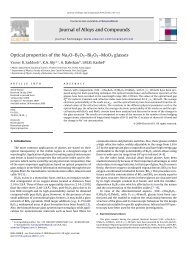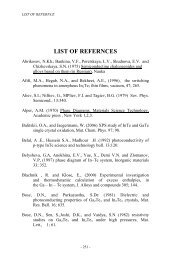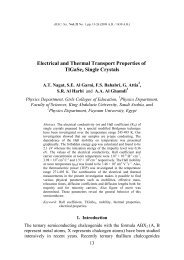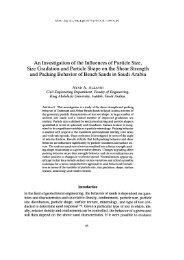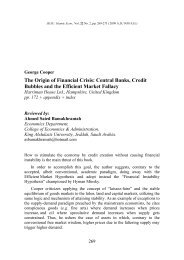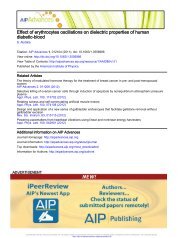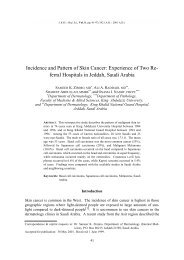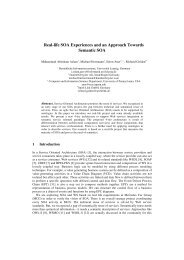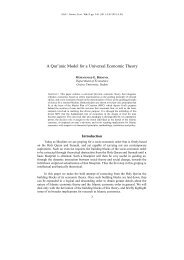Fundamental Organic Chemistry
Fundamental Organic Chemistry
Fundamental Organic Chemistry
Create successful ePaper yourself
Turn your PDF publications into a flip-book with our unique Google optimized e-Paper software.
(4) Dissolves only a small amount of compound on cold .<br />
(5) Is moderately volatile so that the final crystals can be dried readily .<br />
(6) Is nontoxic, nonflammable, and inexpensive.<br />
In addition, impurities should be either highly insoluble in the solvent else highly<br />
soluble, so that they remain in solution during the crystallization.<br />
General guidelines for predicting solubilities based upon the structures of<br />
organic compounds do exist. For example, an alcohol, a compound containing the<br />
hydroxyl (-OH) group as its functional group, may be soluble in water because it<br />
can form hydrogen bonds with water molecules. If an alcohol’s molecules are<br />
largely hydrocarbon, the alcohol may be insoluble in water, but will probably be<br />
soluble in other alcohols, such as ethanol (CH 3 CH 2 OH). Carboxylic acids<br />
(compounds containing – CO 2 H groups) and amines (compounds containing NH 2 ,<br />
N H , or N groups) also can form hydrogen bonds and are also generally soluble<br />
in polar solvents such as alcohols.<br />
Compounds that are largely hydrocarbon in structure are not soluble in<br />
polar solvents because C – C and C – H bonds are not polar. For these<br />
compounds, we would choose a non polar solvent – for example, low-boiling<br />
petroleum ether, which is a mixture of alkanes such as pentane, CH 3 (CH 2 ) 3 CH 3 ,<br />
and hexane, CH 3 (CH 2 ) 4 CH 3 . Thus, in choosing crystallization solvents, chemists<br />
generally follow the rule of thumb: like dissolves like.<br />
12


